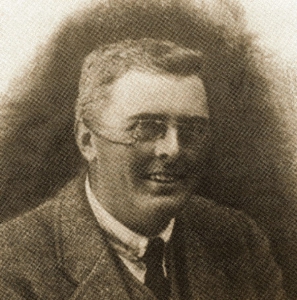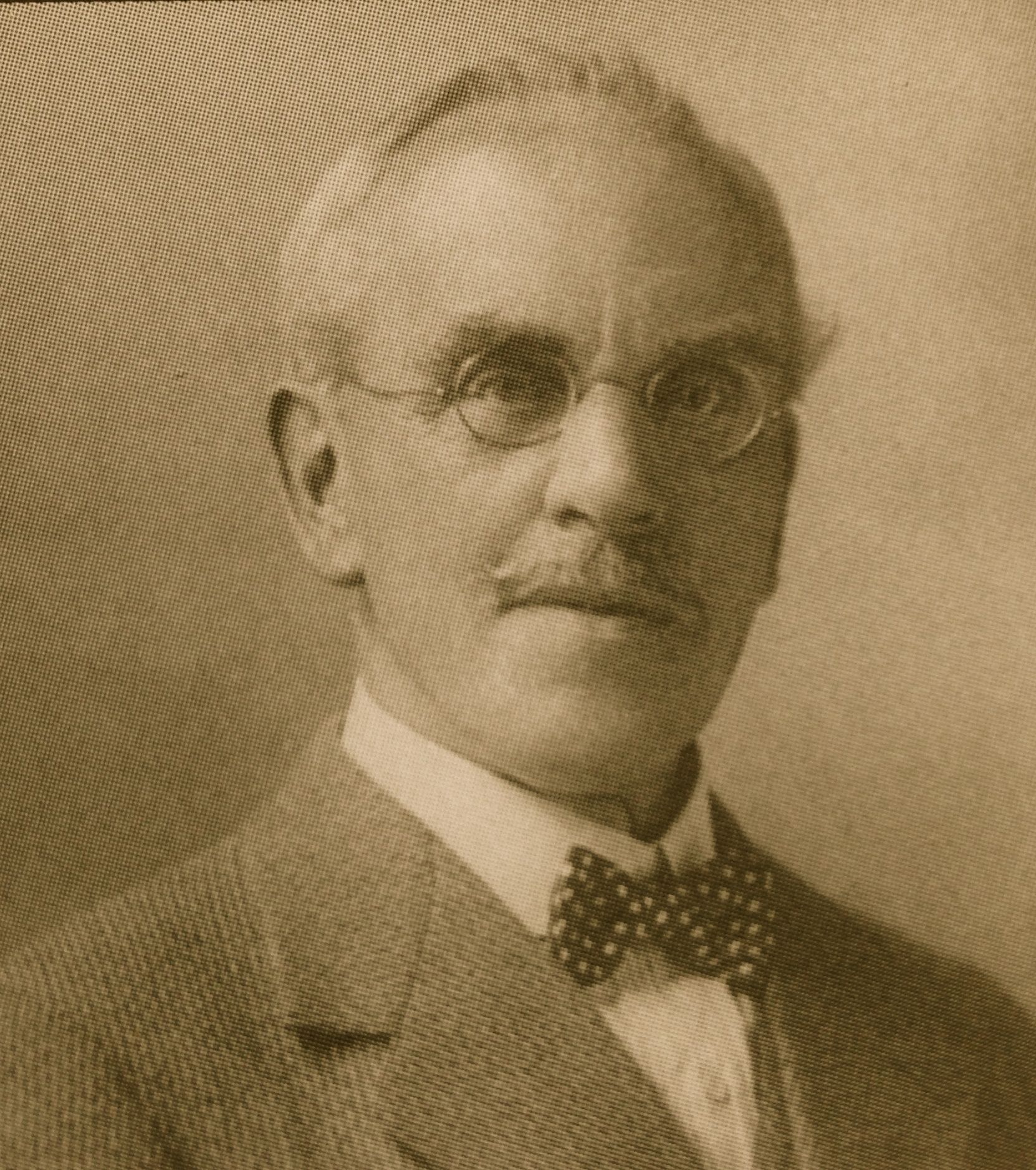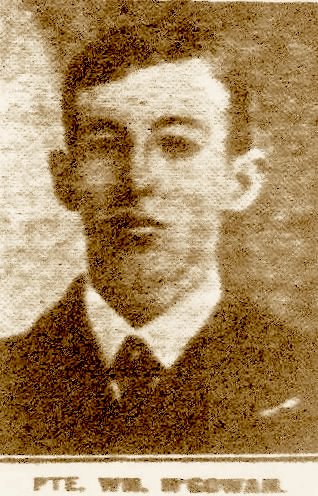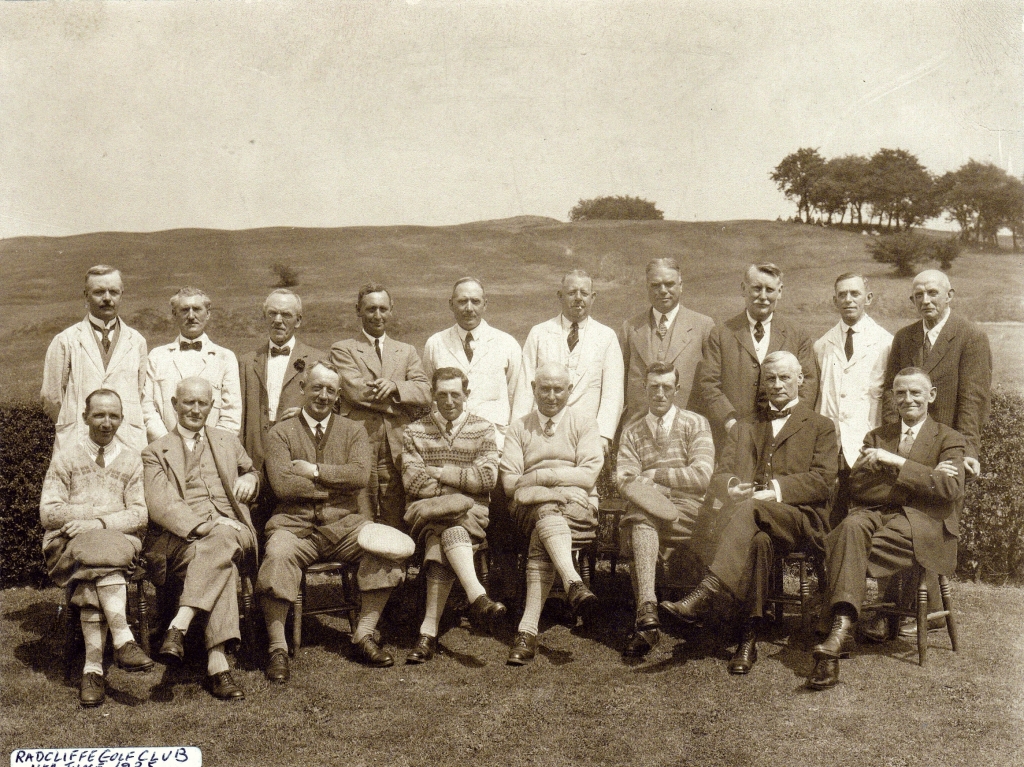Radcliffe on Trent Golf Club
and the Great War
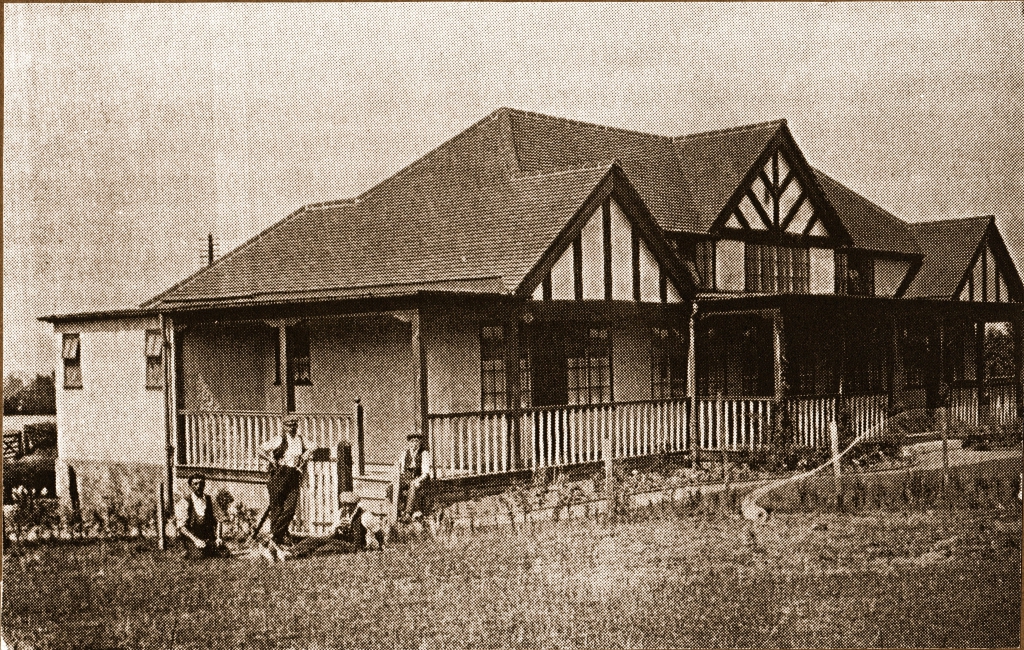
Radcliffe on Trent Golf Clubhouse opened in 1909, demolished 1986
Radcliffe on Trent golf club was founded in 1909, five years before war was declared. The founders were friends and neighbours known locally as ‘topenders’ because of their wealth and status. When planning the new golf course they had no idea that a global war would soon be casting shadows over their future games together.
A plaque in Radcliffe on Trent Golf Clubhouse remembers two golfers who were killed on active service. Our research has identified several war deaths and injuries which deeply affected those playing and socialising on the course. In line with the club’s commemoration of the Somme centenary, we explore here the impact of the First World War on golf players from the village.
1909: The founding of the Club
Radcliffe on Trent Golf Club was formed in 1909 as a limited liability company with seven directors of both the Company and the Club. The first directors comprised successful business and professional men who mainly resided in the village and worked in Nottingham: they were John Fillingham Bishop, a cigar importer who lived on Cropwell Road; Henry Cox, a hosiery manufacturer from Chestnut Grove; Henry Elwin, box manufacturer, Bailey House; Edwin Marshall Green and George Harry Holmes, lace manufacturers; Samuel Smith a lace machine manufacturer from Radcliffe Hall and William Henry Norris, an estate agent from Holme Pierrepont.
The land chosen for the golf course lies on the left hand side of Cropwell Road south east of the village centre and above the Allotment Gardens. The forty-one acres were leased from Earl Manvers for twenty-one years for an annual rent of £120; the Manvers coat of arms was adopted by the club. The terms of the lease included no buildings apart from a clubhouse, retention of hedges, preservation of any game and no play on Sundays (this restriction was lifted about 1912).
Officers were appointed at the first recorded meeting on 26th February 1909. Directors John Bishop, Henry Cox, Henry Elwin, Samuel Smith and William Norris were present. Charles Wightman Pike was elected secretary and wrote the minutes. Robert Hallam, a local solicitor and neighbour of Henry Cox, was elected club solicitor and W.H. Norris was chairman.
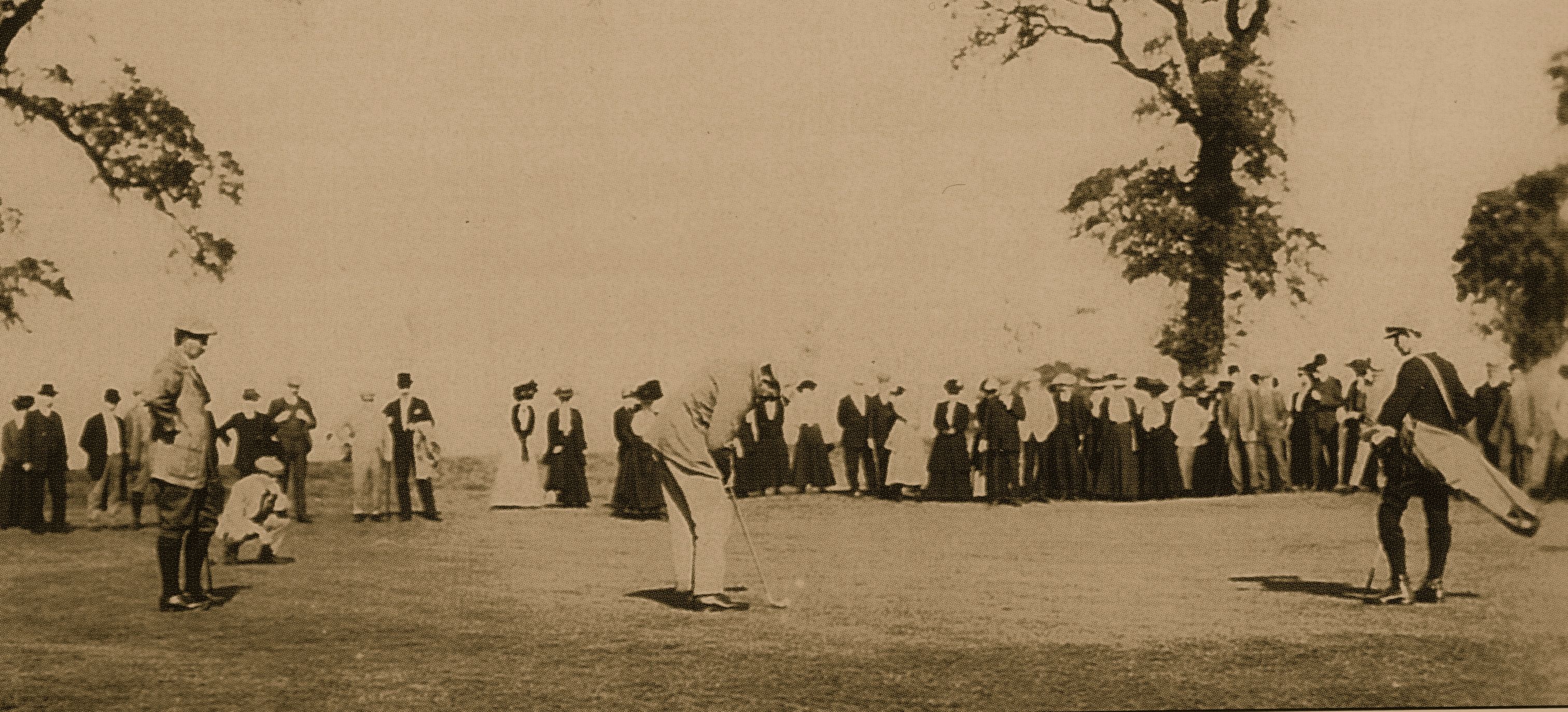
Exhibition match 1909
Photograph courtesy of Radcliffe on Trent Golf Club
The clubhouse, designed by architect George Blatherwick who lived opposite the site, was built by local builders Henry Pike, father of the Club secretary, and Henry Walker. A nine-hole course was laid out by professional golfer Tom Williamson who had previously constructed over sixty golf courses. He participated in the opening exhibition match on October 9th 1909 with Harry Vardon, the British Open Golf Champion; the match was watched by almost two hundred people.
John Bishop was the first Men’s Captain in 1909 and stayed in post in 1910. Henry Elwin was Captain from 1911-13. Both men donated cups for competitions that commenced in 1910. The Bishop and Elwin Cups continue to be awarded annually.
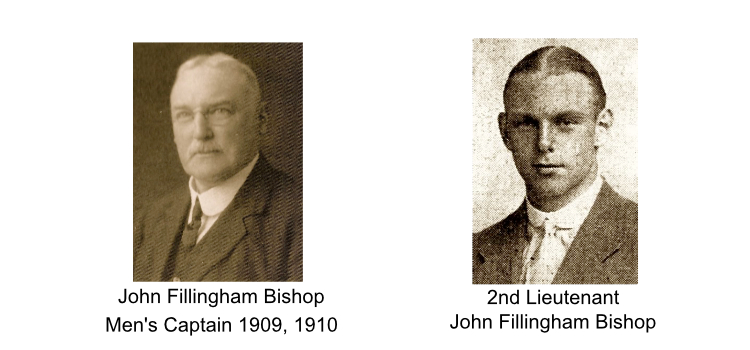
Photograph of John Fillingham Bishop senior courtesy of Radcliffe on Trent Golf Club
Women members played at the club from the time it opened. There was a separate Ladies Section but it was not mentioned in the Club minutes until 1937. Isabella Lamin was employed as golf club stewardess in 1911. She lived nearby in Victoria Street and was married to a butcher, William Lamin. The first Ladies Captain in 1910 was Mrs Gregg. Women competed for the Birkin Cup and Hacking Bowl. Charlotte Haynes, who lived at The Grange in Radcliffe and worked for the Red Cross in WWI, was the first woman to be awarded the Hacking Bowl in 1910. Violet Bishop, daughter of John Bishop and Red Cross voluntary worker during the war, won the Birkin Cup in 1912 and the Hacking Bowl in 1913 and 1921. The cups are still awarded today.
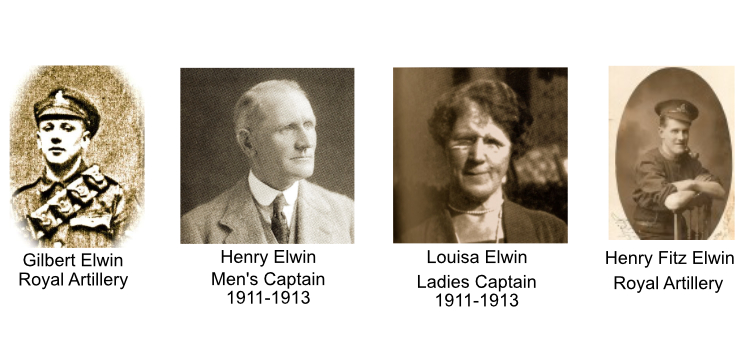
The directors and founder members lives were transformed by the First World War. John Bishop, Henry Cox, Henry Elwin, George Holmes, Robert Hallam and George Blatherwick had eight sons between them who served in WWI. Four were to lose their lives and one was taken prisoner of war. Club members and staff also served; three of them were killed in action. John Bishop and George Holmes had daughters as well as sons who participated in the war: the women undertook voluntary work nursing wounded servicemen.
1914: Early days
The club was relatively unaffected by the war in 1914 although some of the directors’ sons, including Gilbert and Harry Elwin, enlisted at this early stage. Marie Holmes, daughter of founding director George Holmes, began working at the new Pavilion Auxiliary War Hospital, West Bridgford, where she stayed until 1916.
Robert Brown Shaw Mason was Men’s Captain at the golf club; his son was to serve with the Scottish Rifles.
Robert Shaw Mason, Men’s Captain, 1914
Photograph courtesy of Radcliffe on Trent Golf Club
The extent to which the golf course saw play during the war years is not known but the Bishop cup was awarded in 1914 to F.H. Parkes and the Elwin cup to Henry Elwin. The Hacking Bowl cup was awarded to Mrs J. Curnow.
1915: First death of the son of a founder member
George Blatherwick, architect of the clubhouse, was the first founder member to lose a son. The younger George Blatherwick had emigrated to New Zealand before the war. In May 1915 he was missing in action, presumed dead, at Gallipoli while fighting with the ANZACS. George Carlin, an apprentice at the club from 1911 who later become a golf professional, was also at Gallipoli with the Royal Artillery.
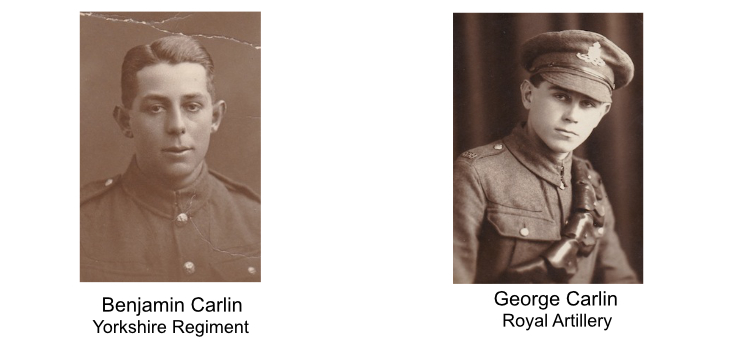
Henry Elwin’s sons Gilbert and Harry, who had enlisted in 1914, arrived in France in September 1915 with the Royal Artillery shortly after the Battle of Loos. John Bishop’s son, also called John Fillingham Bishop, departed for France at the same time and served with the 1/7th Sherwood Foresters. Play continued at the golf course. Robert Rhodes, an accountant from Nottingham, was the captain. He was to play a major role in running the club up until the late 1930s.
The Bishop Cup was awarded to J. Mallett, the Elwin Cup to P. W. Cook and the Hacking Bowl to Miss M. Foster. The Birkin Cup was not awarded.
1916: Deaths on the Somme battlefield
War tragedies intensified in 1916 for the golf players. Francis Cursham, a member, was wounded during the Easter Rising, Dublin, while in action with the 2/8th Sherwood Foresters.
On July 1st, George Blatherwick’s younger son Robert was killed at the Somme while in action with the 10th West Yorkshires. John Fillingham Bishop was wounded and taken prisoner of war.
Robert Hallam’s young son, Robert, who served as a junior officer with the 15th Sherwood Foresters, lost his life later in July at the age of seventeen. The Elwin brothers were present on the Somme with the Royal Artillery. Back in Radcliffe on Trent, Marie Holmes moved from the Pavilion Auxiliary Hospital and spent the next three years working for the Red Cross at the Nottingham Branch Dispensary, Hyson Green, performing duties similar to those provided by nurses.
George Blatherwick (above) was Men’s Captain in 1916 and remained in post in 1917 and 1918.
Photograph courtesy of Radcliffe on Trent Golf Club.
Women’s cups were not awarded at the golf club between 1915 and 1919. The men’s tournaments continued. G. Kirkbride was awarded the Bishop Cup in 1916 and W.A. Green the Elwin Cup.
1917: More deaths and injuries on the Western Front
Henry Cox was the third man from the group which set up the club to lose a son. Lieutenant Percy Cox, Northumberland Fusiliers, was killed in April at the Battle of Arras, possibly by friendly fire. The War Office suppressed a report of his death from an eye witness on the grounds that it was ‘unreliable’. Robert Mason was Captain of the golf club in 1914. His son Lance Corporal James Mason suffered severe gunshot wounds to the shoulder in May 1917 while serving with the Scottish Rifles and was hospitalised in England. Captain Francis Holmes, son of director George Holmes, arrived in Egypt with the South Nottinghamshire Hussars in July. The 3rd Battle of Ypres (Passchendaele) began in August. The Elwin brothers, who were in action, survived the conflict but Charles Wightman Pike, club secretary now serving with the Royal Artillery, was killed in October.
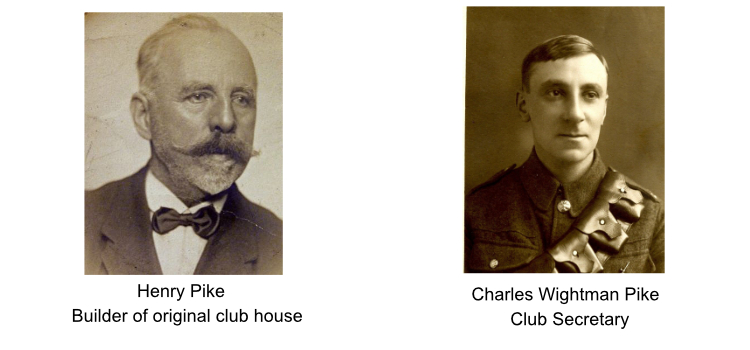
Club member Francis Robinson was awarded the Bishop Cup at the golf course and then set off for France as a Lieutenant in the Tank Corps. T. H. Martin was awarded the Elwin Cup.
1918: Radcliffe on Trent club professional killed
The final year of the war saw more tragedies for those associated with the golf club. While George Carlin continued to serve without injuries, his brother Benjamin was killed in May at the Battle of the Aisne, age eighteen.
Violet Bishop, sister of John, began voluntary work at Lamcote Auxiliary Hospital for Officers. James Mason was wounded again, having been sent back to the front. He returned to England for treatment for shrapnel wounds to the leg and remained there for the rest of the war. Captain Francis Holmes was probably present on HMS Leasowe Castle when it was torpedoed in May while transporting the South Notts. Hussars from Alexandria to Marseilles. He survived the war, having served in France with the Machine Gun Corps from August 1918, but Francis Cursham, now a Major, was killed in a road accident in the U.K. while attending senior officers’ training school.
William McGowan was a club professional at the Radcliffe golf club from 1913. Born in Scotland about 1886, he was assistant to William McEwen at Formby Golf club from 1904–5 and a professional golfer at Wednesbury Golf Club 1911–12 before coming to Radcliffe on Trent. He served with the 7th Battalion, The Queen’s (Royal West Surrey) Regiment during the war and was killed near the Oise canal on October 24th 1918 in the run up to the Battle of the Sambre. He is buried at the Cross Roads Cemetery, Fontaine-au-Bois, France. He is not remembered on the Radcliffe on Trent Memorial nor on any memorial in Nottingham where he lived with his wife. However, he is remembered on the plaque at the Golf Club and on the Prestwick War Memorial.
George Blatherwick, who suffered the loss of both sons in the war, was awarded the Bishop Cup in 1918. The Elwin Cup was awarded to M. Potter.
Returning servicemen and changes at the golf club
Following demobilisation, Gilbert and Harry Elwin returned to Radcliffe on Trent and carried on working in their father’s business. John Fillingham Bishop was released from internment and also returned to the village where he spent much of his time involved in sport, including playing cricket at county level. Francis Holmes became a plain net manufacturer and lived on Main Road for many years. James Mason became a wireless and electrical engineer after his return and lived on Shelford Road.
In 1919 the Bishop Cup was won by ex-serviceman Frank Foster whose family lived on Bolton Terrace. During the war he was a signaller with the Royal Field Artillery and spent two months in hospital from October to December 1918 with war related illnesses. His sister Agnes, who was married to former club secretary Charles Wightman Pike, died of influenza on 28th December 1918. Frank became an accountant, lived locally and played cricket as well as golf.
George Carlin returned from the war and became a much respected and well liked professional at Radcliffe on Trent Golf Club. He worked at the club for almost thirty years from 1919 to 1947. He lived near the golf course at ‘Fairway’, Cropwell Road. George’s son, Robert Benjamin, born in 1925, was named after his brother who was killed in WWI.
Opening of the extended golf course in 1925
Photograph courtesy of Radcliffe on Trent Golf Club
Left to right: Back row W. H. Holmes (Captain 1927), Mather, George Blatherwick (Captain 1916-18), L. Maggs (Captain 1931), G.T. Lovett (Captain, 1929), G. Taylor, M. Keetley (Captain 1919-20), W. Foster (Captain 1922), G.E. Mellors (Captain 1928), A.V. Oliver (Captain 1923).
Front row: E. H. Parkes (Captain 1921), Henry Elwin (Captain 1911-13, 1930), Tom Williamson (Golf professional), George Carlin (Golf professional), Harry Vardon (Golf professional), Charles Whitcombe (Golf professional), Robert Rhodes (Captain 1915, 1924-5, 1933), W.H. Hull (Captain, 1926)
Major changes took place at the club after the war. The land the club rented was purchased at auction from Earl Manvers in 1920 when much of his estate was put up for sale. It was sold to Henry Elwin acting on behalf of the Club for the high price of £3000. The revenue was raised by members purchasing share certificates and debentures. Fifty further acres of land were bought from Notts County Council in 1924 for £2200, paving the way for the construction of an eighteen hole golf course. The extended golf course opened in June 1925 with a day of exhibition matches, observed by several hundred spectators, that ended with a fourball foursome. Harry Vardon and Tom Williamson, the famous professionals who featured in the Club’s 1909 exhibition match, played against Charles Whitcombe, winner of the £750 Professional Tournament in 1924 and George Carlin, club professional. The match finished ‘all square’ with each pair scoring 35 Out and 37 In.
The changes at the golf course in the early 1920s included a restructuring of the club’s administration. The pre-war directors retired and a new group of seven were elected: H. Elwin (Chairman), J. F. Bishop, W. Foster, M. Keetley, A. V. Oliver, E. H. Parkes and R. Rhodes. Two of the founding directors died in the 1920s: George Holmes in 1922 and John Fillingham Bishop in 1924. Both men were sixty six and left substantial amounts of money in their wills. Robert Hallam, club solicitor, died in 1930 at the age of fifty eight. Founding directors Cox, Green, Elwin and Blatherwick died between 1938 and 1944.
Radcliffe on Trent Golf Club was forced to abandon its Course in 1972 following Nottinghamshire County Council’s decision in 1966 to take over most of the land in order to reroute the A52 (fifty years later the proposed new road has yet to be built). A new course was laid out adjacent to the old one and was opened in 1972, together with a new clubhouse. The old clubhouse fell into disrepair and was demolished in 1986; the unkempt former golf course is now much used by dog walkers.
Remembering those who fell in the Great War
The Club still remembers losses of the First World War although not every war death is noted in perpetuity. A plaque commemorating Francis Cursham and William McGowan is situated in the current clubhouse. Charles Wightman Pike, the first club secretary, is remembered on a plaque in St Mary’s Church in the village. George and Robert Blatherwick, Benjamin Carlin, Percy Cox, Robert Hallam and Charles Wightman Pike are remembered on Radcliffe on Trent War Memorial. Francis Cursham is remembered on the lychgate of St Edmund’s Church, Holme Pierrepont.
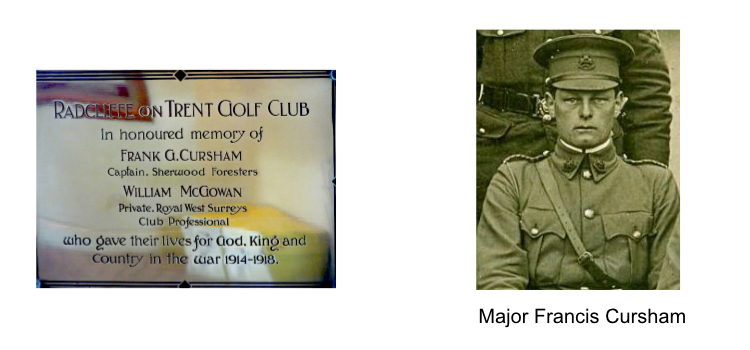
Note- Francis Cursham was a Major in the 2/8th Battalion of the Sherwood Foresters at the time of his death and William McGowan served with the 7th Battalion, The Queen’s (Royal West Surrey) Regiment.
In 2016 Radcliffe on Trent Golf Club, in conjunction with the Royal British Legion, commemorated those associated with the club who were on the Somme battlefield by displaying a flag on the 18th Green until November 11th. The death of William McGowan, golf professional, who was killed in action eighteen days before the Armistice, entitles the club to do so.
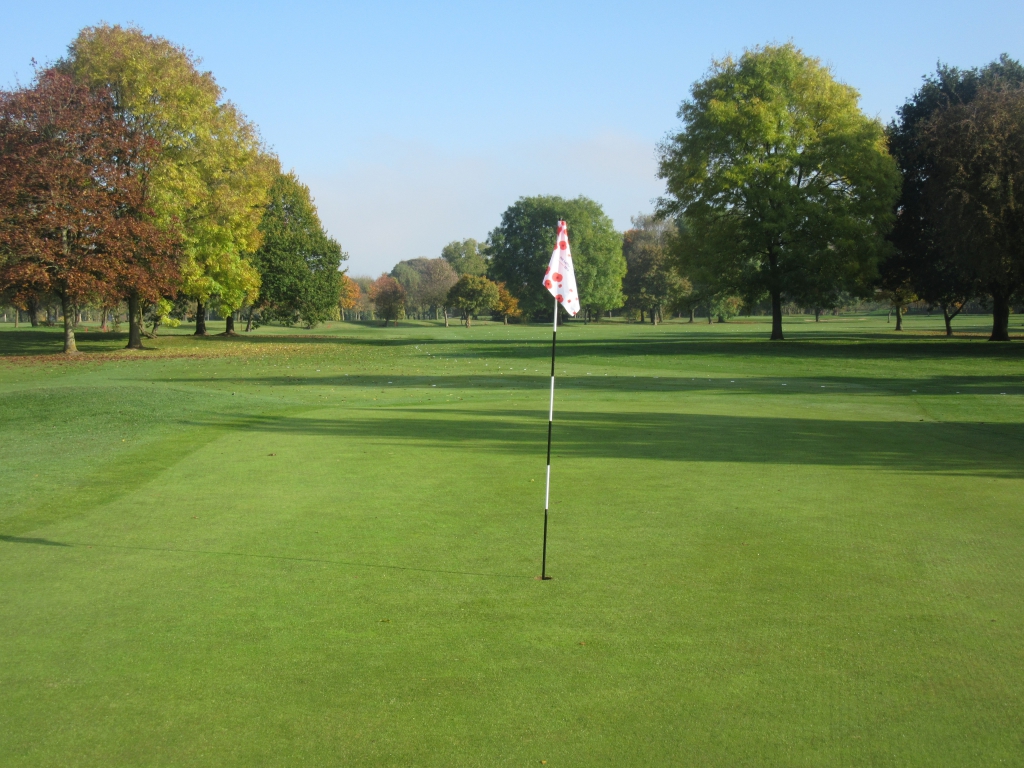
Radcliffe on Trent Golf Club commemorates the Battle of the Somme on the 18th green
Click on photograph to enlarge the flag
Acknowledgement: The Radcliffe on Trent Golf Club 1909–2009 compiled by Olive Pywell and Mike Shaw was the source for photographs of captains and members and provided information about the history of the golf club. The book is a limited edition.
Author: Rosemary Collins, November 2016

